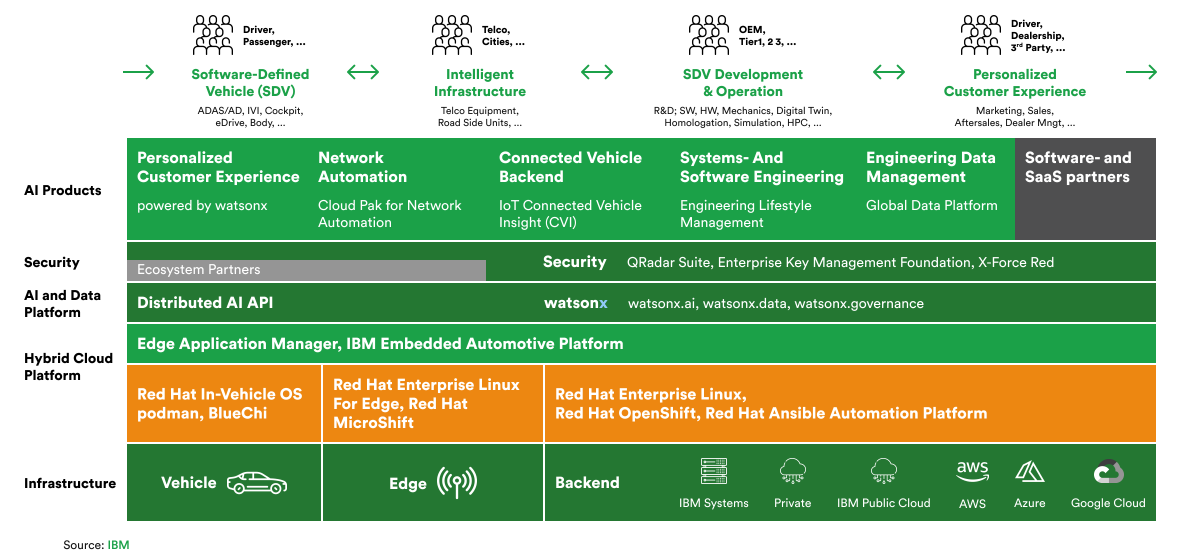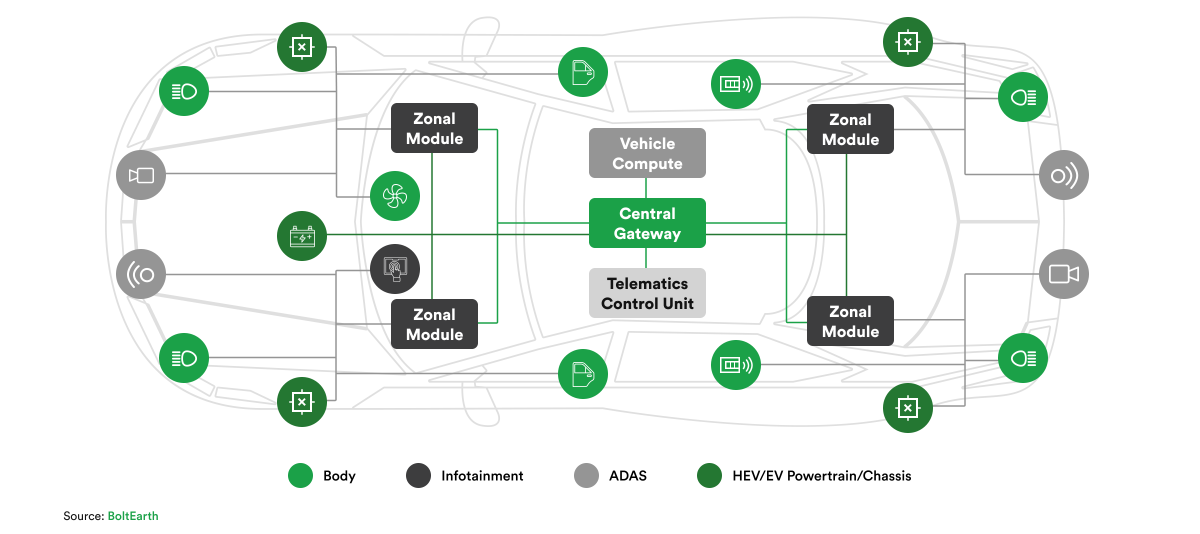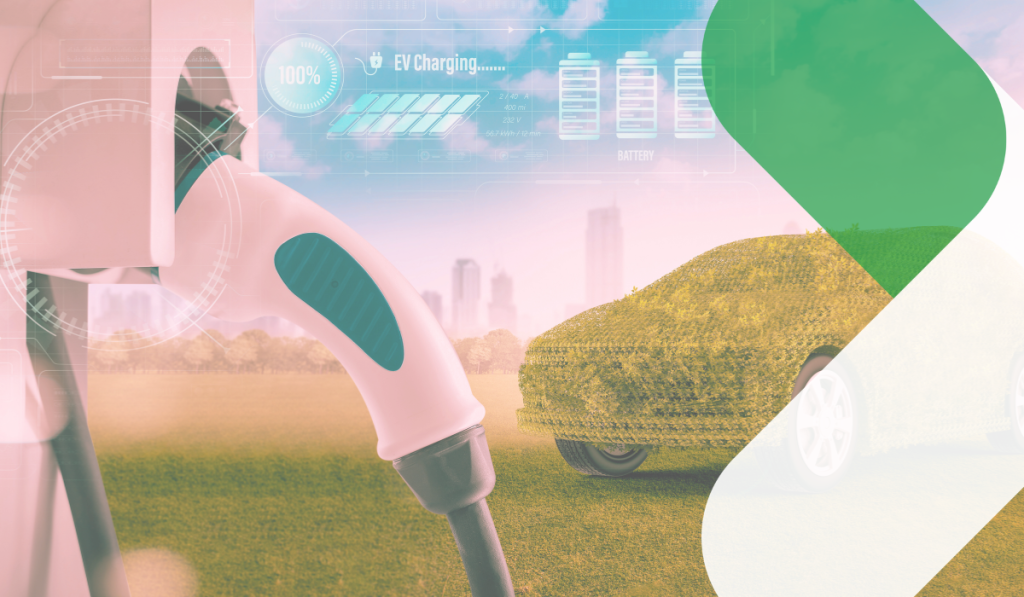
AI-Powered LiDAR: A New Era of Perception
How AI and ML enhance LiDAR technology by overcoming data processing challenges, enabling advanced applications in autonomous systems, robotics, and 3D mapping, and more.
The software-defined vehicle market is experiencing significant growth. According to MarketsandMarkets, the market is projected to grow from $270.9 billion in 2023 to $419.7 billion by 2028. SDV technology is not just an incremental step forward but a leap into a future where hardware limitations no longer define vehicles, but instead, software capabilities and AI-driven functionalities take the forefront, transforming how we perceive mobility and connectivity. This paradigm shift enables unprecedented levels of safety, efficiency, and personalization, opening up new avenues for innovation in eco-friendly transportation solutions and reshaping the very fabric of urban mobility and infrastructure.
By embracing this shift, the automotive industry stands on the brink of a revolution, on the path to delivering safer, more efficient, and more responsive vehicles than ever. In this context, the importance of SDV technology cannot be overstated, offering a blueprint for the future of transportation that is smarter, cleaner, and more adaptable to the needs of drivers and society.
This article delves into the transformative potential of SDV technology in maximizing vehicle performance and enhancing safety measures. By exploring the mechanisms through which SDV technology redefines the automotive landscape, we will uncover how it serves as a linchpin for the next generation of vehicles. Through an examination of engine and powertrain optimization, improvements in vehicle dynamics, and the pivotal role of advanced driver-assistance systems, we’ll highlight the multifaceted benefits that SDV technology brings to the table. Furthermore, we will address the challenges and considerations that accompany this technological revolution, including cybersecurity, infrastructure needs, and data privacy, underscoring the holistic impact of SDV technology on the future of automotive design and user experience.
Software Defined Vehicle technology represents a transformative evolution in the automotive industry, moving from traditional, hardware-centric vehicle design to a future where software is the primary driver of functionality, innovation, and user experience. At its heart, SDV technology reimagines the vehicle as a fully integrated software system, where every feature and function can be updated, optimized, or redefined through software. This paradigm shift is highlighted by the decoupling of software from the physical limitations of hardware, allowing automotive manufacturers to innovate at the speed of software development rather than the slower pace of hardware changes. This approach enhances the vehicle’s adaptability to new technologies and user needs and significantly extends its lifecycle, providing ongoing value to consumers and a sustainable model for the industry.
The benefits of this approach are various, offering a platform for continuous improvement, personalization, and adaptation to emerging trends and technologies. By harnessing the power of SDV technology, vehicles can evolve, gaining new capabilities and functions long after they have left the showroom floor. This marks a departure from the traditional vehicle ownership and use model and opens up possibilities for enhancing safety, efficiency, and the overall driving experience. In essence, SDV technology predicts a new era for the automotive industry, where the opportunities are limited only by the imagination and ingenuity of software developers, designers, and engineers.

A crucial component in realizing the potential of SDV technology is the adoption of zonal architecture within vehicle design. Zonal architecture simplifies wiring, reduces complexity, and enhances scalability by consolidating the vehicle’s electronics and functions into centralized zones. This approach not only streamlines the integration of new technologies but also facilitates the seamless interaction between various vehicle systems, enabling a more efficient and responsive vehicle architecture.
The importance of zonal architecture in the context of SDV technology cannot be understated. It lays the groundwork for more efficient data management, improved cybersecurity measures, and easier updates and upgrades through over-the-air (OTA) updates. By reducing the reliance on physical hardware and focusing on software capabilities, zonal architecture supports the SDV vision of vehicles that can adapt and evolve over time, providing personalized experiences for users and opening new possibilities for safety, performance, and connectivity.

In the pursuit of unprecedented vehicle performance, SDV technology emerges as a pivotal innovation, redefining modern vehicles’ capabilities. Through complex software integration with automotive engineering, SDV unlocks new efficiency, power, and dynamic control dimensions.
The advent of Software Defined Vehicle technology marks a new era in optimizing engine and powertrain systems. This innovative approach leverages the precision and adaptability of software to refine and enhance the vehicle’s heart continually. Through refined algorithms and real-time data analytics, SDV enables the dynamic adjustment of engine parameters such as fuel injection timing, air-to-fuel ratios, and turbocharging controls. This optimizes the engine’s efficiency and power output and significantly reduces its environmental footprint by minimizing emissions.
The impact of such optimization is profound, offering a smoother, more responsive driving experience that is finely tuned to the conditions of the road and the driver’s desires. Also, the ability to update and improve these systems over time through over-the-air updates ensures that vehicles maintain peak performance and improve with age, a revolutionary concept in automotive engineering.
Software Defined Vehicle technology brings a giant leap in the control and enhancement of vehicle dynamics. By employing advanced software to manage systems such as active suspension, steering, and traction control, SDV technology introduces precision and adaptability previously unthinkable. These systems can now respond in real-time to changes in road conditions, driver inputs, and vehicle behavior, ensuring optimal handling, stability, and comfort under various driving scenarios.
For instance, active suspension systems can automatically adjust the damping rates to absorb road irregularities, providing a smoother ride and enhancing grip and safety during high-speed maneuvers. Similarly, software-controlled traction control can maximize tire adherence to the road surface, improving safety and performance in challenging weather conditions. This smart manipulation of vehicle dynamics elevates the driving experience. It contributes significantly to the vehicle’s overall safety, demonstrating the vast potential of SDV technology to transform the very foundation of vehicle performance and capability.
As the automotive industry evolves, safety remains the primary concern, driving the adoption of innovative technologies to protect drivers, passengers, and pedestrians alike. In this instance, SVD technology is at the forefront of enhancing vehicle safety, offering complex solutions beyond traditional measures.
Integrating SVD technology into vehicle safety has catalyzed a monumental shift in developing and deploying Advanced Driver-Assistance Systems (ADAS). Through the infusion of advanced software, vehicles are now equipped with complex features designed to anticipate and respond to potential hazards with greater precision and foresight than ever before. This includes adaptive cruise control, automatic emergency braking, lane-keeping assist, and pedestrian detection systems, each leveraging real-time data from sensors and cameras to make split-second decisions that can prevent accidents and save lives.
Moreover, the flexibility afforded by SDV technology means that these systems can continuously evolve, improving accuracy and functionality through over-the-air updates. This adaptability ensures that vehicles meet the current safety standards and are prepared to incorporate future advancements in safety technology. The impact of these advancements extends beyond the individual vehicle, promising a decline in road accidents and fatalities and marking a significant step forward in the journey toward fully autonomous driving.
Over-the-air updates represent a cornerstone of the safety enhancements enabled by Software Defined Vehicle technology. This innovative feature allows for the wireless transmission of software updates directly to vehicles, ensuring they are always equipped with the latest safety features and performance improvements. The significance of OTA updates cannot be overstated. They enable the immediate rectification of software bugs, the enhancement of existing safety features, and the addition of new functionalities without needing physical service appointments. This significantly reduces vehicle downtime and ensures that safety enhancements are rapidly deployed across the fleet, minimizing the risk of accidents related to outdated software.
OTA updates facilitate the seamless integration of artificial intelligence and machine learning advancements into vehicle safety systems, enabling them to learn from vast amounts of data and continually refine their predictive capabilities. The result is a dynamic, ever-improving ecosystem of safety features that adapt to the changing driving environment, setting a new standard for vehicle safety in the digital age.
As we approach the point of this technological revolution, it is crucial to acknowledge and address the potential challenges that could inhibit progress in implementing SDV technology.
Cybersecurity. One of the primary challenges lies in cybersecurity. As vehicles increasingly become connected and software-driven, the risk of cyber-attacks escalates, posing a significant threat to users’ safety and privacy. The complexity of SDV systems, which integrate numerous software features and rely on external communication networks, opens multiple angles for potential security breaches. Ensuring robust cybersecurity measures requires ongoing surveillance, advanced encryption techniques, and continuous monitoring to safeguard against unauthorized access and tampering.
Infrastructure. The widespread adoption of SDV technology needs substantial investments in infrastructure, both technologically and regulatorily. The automotive ecosystem must evolve to support the seamless operation of software-defined vehicles, encompassing everything from network connectivity and data processing capabilities to establishing standards and protocols for software development, testing, and deployment.
Data privacy and security. Data privacy and security also emerge as critical considerations in the SDV landscape. The vast amounts of data generated and processed by software-defined vehicles, including personal information and driving behavior, must be handled with the utmost care to protect against misuse and ensure compliance with data protection regulations. Establishing transparent data management policies and securing user consent are essential steps in building trust and ensuring the ethical use of SDV technology.
As we navigate the transformative landscape of Software Defined Vehicle technology, it’s clear that we are on the verge of a revolutionary shift in the automotive industry. The promise of SDV technology extends beyond enhancing vehicle performance and safety. It represents a new era of dynamic and adaptable transportation solutions. This leap forward in automotive innovation, marked by the seamless integration of advanced driver-assistance systems and the revolutionary potential of over-the-air updates, offers a glimpse into a future where vehicles continuously evolve in efficiency, power, and responsiveness.
Technology companies like rinf.tech are at the forefront of this exciting journey, whose pioneering automotive solutions embody the essence of SDV technology. By leveraging our expertise in automotive software development and commitment to innovation, rinf.tech is actively shaping a future where vehicles are not just modes of transportation but intelligent platforms for life-saving advancements and unparalleled driving experiences. As we look ahead, the collaboration and vision of industry leaders will be crucial in overcoming the challenges facing SDV technology, paving the way for a safer, more efficient, and more connected world on the move.

How AI and ML enhance LiDAR technology by overcoming data processing challenges, enabling advanced applications in autonomous systems, robotics, and 3D mapping, and more.

Offering insights into how the latest AI advancements will impact consumers, manufacturers, and the broader environment in 2025 and beyond.

Showcasing the environmental and economic benefits of integrating sustainable materials and robust recycling practices into the automotive value chain.